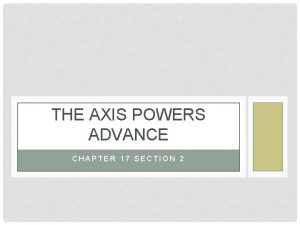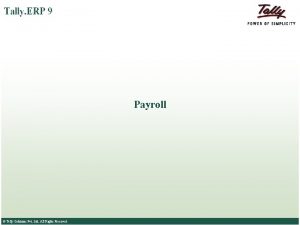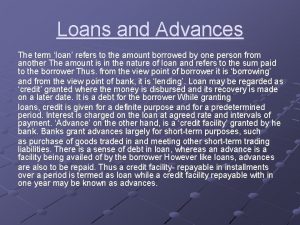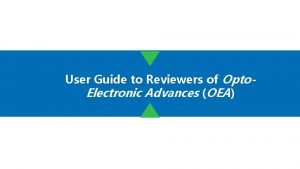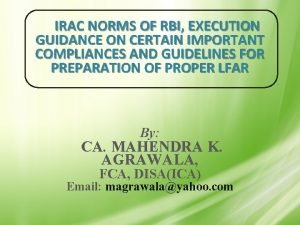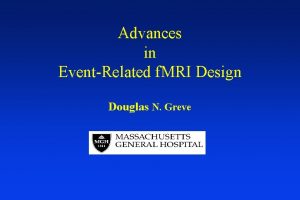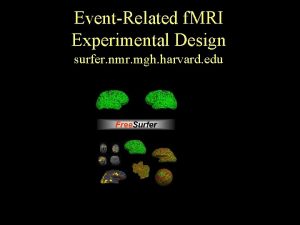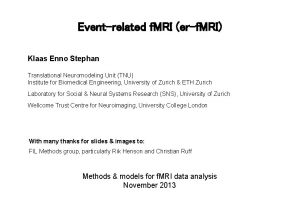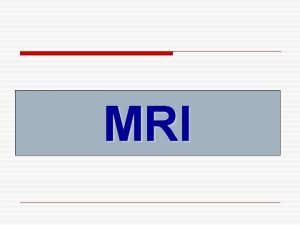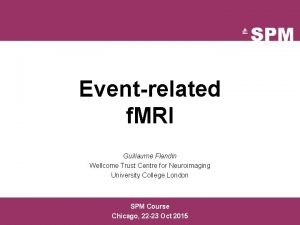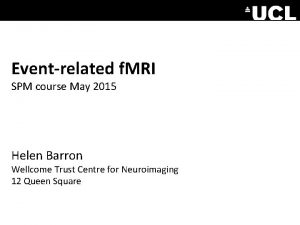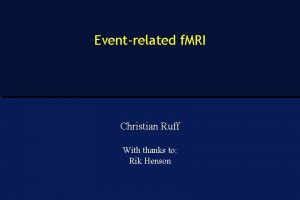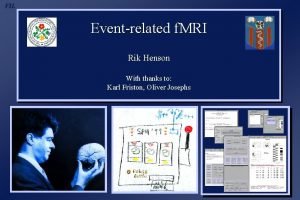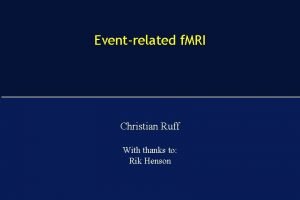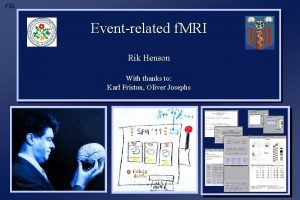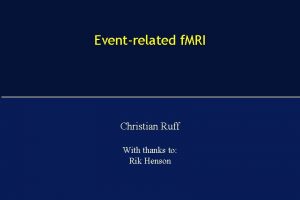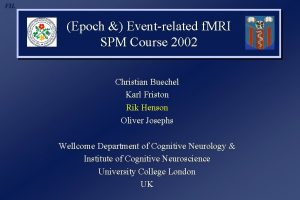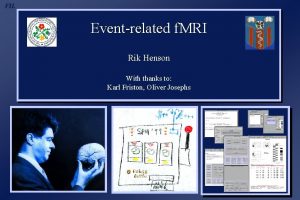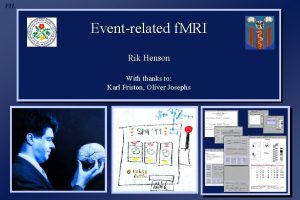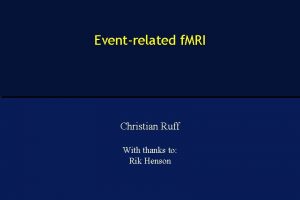Advances in EventRelated f MRI Experimental Design Douglas
















- Slides: 16

Advances in Event-Related f. MRI Experimental Design Douglas N. Greve

Design Parameters • TR – time between volume acquisition (temporal resolution). • Ntp – number of time points (TRs, frames, volumes, …) • Nc – number of event types (conditions) • Npc – number of events/repetitions of each event type (can vary across event types) • Tpc – duration of each event type (can vary across event types) • Schedule – event onset time and identity • Event Response Model

Outline • What is Event-Related Design? • Blocked Design • Fixed-Interval Event-Related • Rapid-Presentation (Jittered) Event-Related • Efficiency and Event Scheduling http: /surfer. nmr. mgh. harvard. edu/optseq

Fact of (f. MRI) Life #1: Dispersion • How closely can trials/events be spaced?

Fact of (f. MRI) Life #2: Noise • How much data needs to be collected?

Fact of (f. MRI) Life #3: Time • Collect lots of observations to reduce noise • Time is Money • Subjects won’t work forever

Blocked Design 20 -60 sec fixation • Consecutive, rapid presentation for long duration. • Use overlap to build a larger signal. • Simple analysis. • Optimal for detection.

Using Overlap to Increase Amplitude 1 2 3

Blocked Design Drawbacks • Lose ability to distinguish individual responses • Confounding psychological and physiological effects • Habituation/Adaptation • Expectation • Set (Strategy) • Reminder: efficient.

What is Event-Related Design? (c. f. Blocked Design) • Measure Average Response to Single Event Type • Post Hoc Event Assignment based on Subject’s Response • Random Order of Events • Historical: EEG/Evoked Potentials • Less Powerful than Blocked

Fixed-Interval Event-Related 12 -20 s • Push trials apart enough to prevent overlap. • Interval fixed at minimum is most efficient. • Random Sequence (Counter-balanced) • Allows Post-Hoc Stimulus Definition • Mitigates Habituation, Expectation (? ), and Set • Inflexible/Inefficient/Boring • Good if limited by number of stimuli (not scanning time)

Rapid-Presentation Event-Related • Closely Spaced Trials (Overlap!) • Raw signal uninterpretable • More Stimulus Presentations for given scanning interval • Random Sequence • Jitter = “Random” Inter-Stimulus Interval (ISI/SOA) • Linearity Assumption

Where does jitter come from? (What’s a Null Condition? ) • “Null” condition – fixation cross or dot • By hypothesis, no response to null • Insert random amounts of null between task conditions • Differential ISI = Differential Overlap A + B A + A B A + + B A Time

Rapid-Presentation Properties • Efficient (not as efficient as blocked) • Can distinguish responses despite overlap • Highly resistant to habituation, set, and expectation • Flexible timing (Behavioral, EEG, MEG) • Linear overlap assumption • Analysis: Selective Averaging/Deconvolution (GLM) • How to schedule stimulus onsets?

Scheduling and Efficiency A: N=5 B: N=10 C: N=10 • Efficiency: statistical power/SNR/CNR per acquisition • Efficiency increases with N • Efficiency decreases with overlap • Efficiency increases with differential overlap • Choose schedule with optimum efficiency before scanning

Summary • Facts of Life: Dispersion, Noise, Time • Blocked - Habituation, Expectation, Set, No Post-Hoc • Fixed-Interval Event-Related – Inefficient/Boring • Rapid-Presentation Event-Related • Randomized inter-stimulus onsets • Overlap Linearity • Efficient - Optimization Tool • Identical designs for Behavioral, f. MRI, EEG, and MEG
 Coherent scattering
Coherent scattering Experimental vs nonexperimental
Experimental vs nonexperimental Experimental vs non experimental
Experimental vs non experimental Solomon four group design
Solomon four group design Disadvantages of experimental research
Disadvantages of experimental research Experimental vs non experimental
Experimental vs non experimental Axis powers
Axis powers Payroll in tally
Payroll in tally Advances in technology during wwii
Advances in technology during wwii Chapter 9 intellectual development in the first year
Chapter 9 intellectual development in the first year Advances in real time rendering
Advances in real time rendering What is long term loans and advances
What is long term loans and advances Opto-electronic advances
Opto-electronic advances Recent advances in dental ceramics
Recent advances in dental ceramics Irac norms
Irac norms Global oncology trends 2017 advances complexity and cost
Global oncology trends 2017 advances complexity and cost Advances in memory technology
Advances in memory technology






